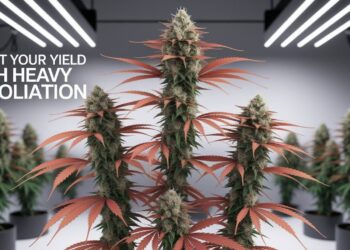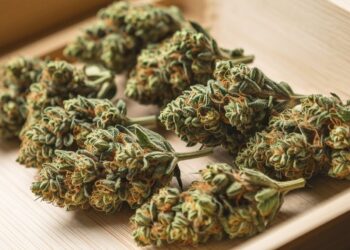Cannabis bonsai confused me when I first heard about it. How could you turn a fast-growing herb into a miniature tree? After three years of growing these tiny masterpieces, I’ve learned it’s incredibly rewarding.
Cannabis bonsai combines ancient Japanese art with modern cultivation. You’re creating miniature cannabis plants that live for years while taking up minimal space.
Perfect for apartment growers or maintaining mother plants without dedicating entire rooms. This guide covers everything you need to start your first cannabis bonsai.
I’ll show you which strains work best, essential tools, step-by-step training methods, and how to solve common problems. I’ve made every mistake possible, so you don’t have to.
Cannabis bonsai means growing full cannabis plants in tiny containers using traditional techniques. The Japanese word “bonsai” literally means “planted in a container. “This ancient art adapted perfectly to cannabis for space-efficient growing.
Benefits and Practical Applications
1. Space Efficiency and Aesthetic Appeal
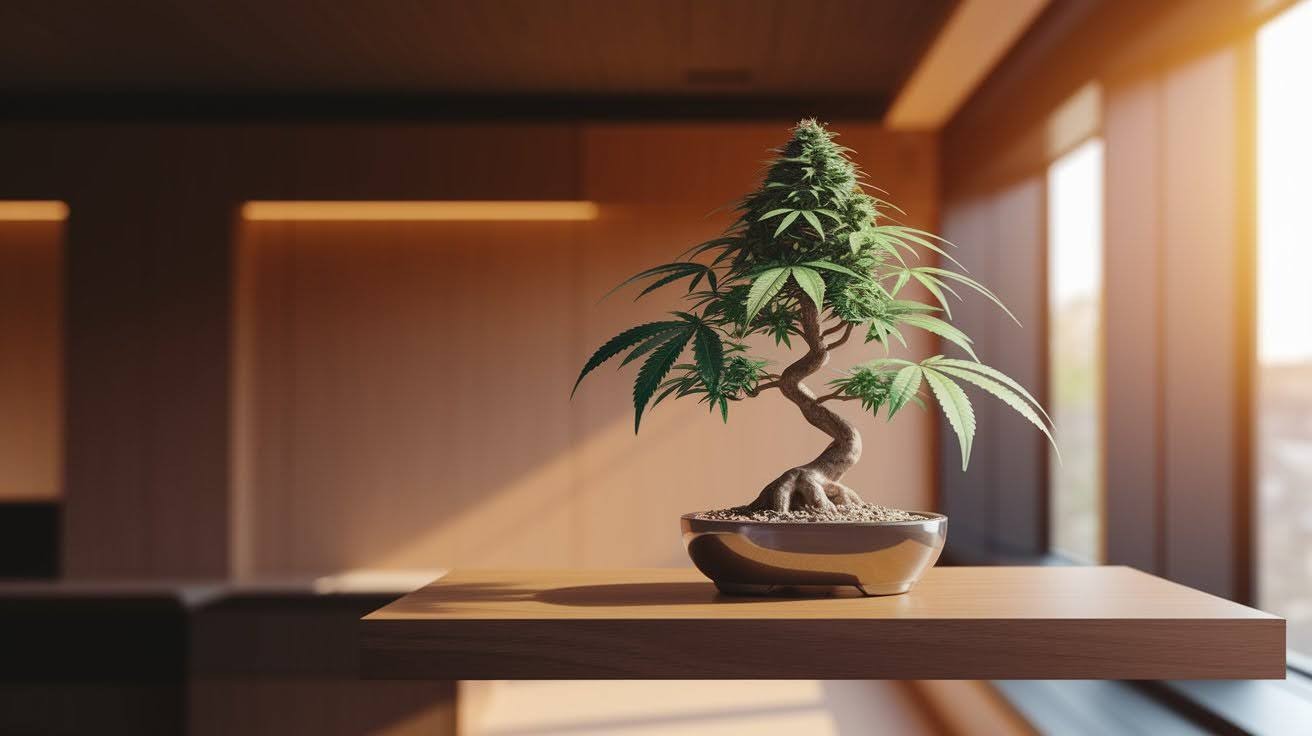
My first cannabis bonsai fit perfectly on my kitchen windowsill. I was amazed how a full cannabis plant could thrive in such a tiny space.
Apartments make growing challenging. Traditional cannabis plants need entire rooms. Cannabis bonsai changes everything.
I now keep three mother plants in the space where one regular plant used to grow. Each sits in a 6-inch pot and produces dozens of clones annually.
People think they’re regular houseplants. My cannabis bonsai sits next to my jade plant. Visitors compliment the “interesting Japanese maple” on my shelf.
You can integrate them into existing plant collections easily. They add zen-like calm to any space. Perfect for renters who can’t modify their spaces.
2. Therapeutic and Meditative Benefits
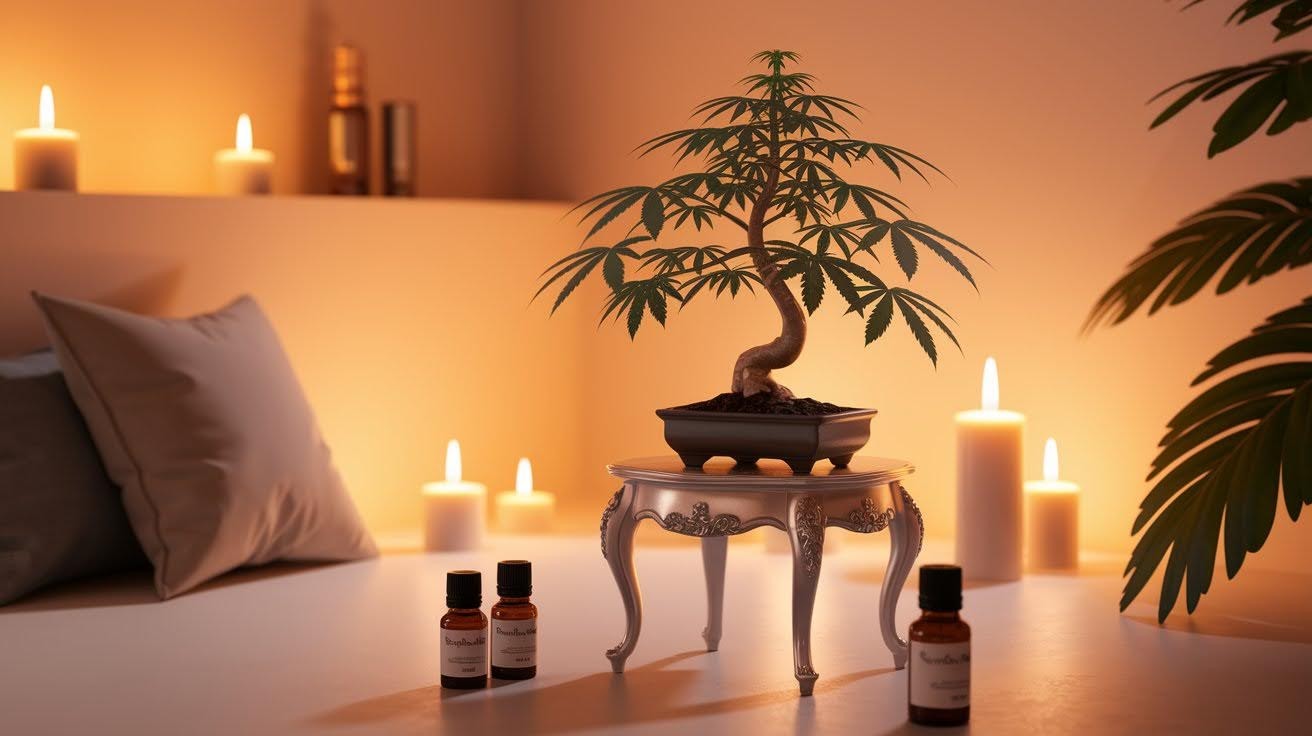
Working on my cannabis bonsai melts away stress instantly. The daily pruning and shaping become pure meditation.
I used to rush through everything. Cannabis bonsai taught me patience. You can’t force these plants to grow faster.
Every snip of the scissors requires thought. Which branch should I remove? How will this cut affect the overall shape? The decision-making process slows down my racing mind.
Here’s what happens when you tend these plants daily:
Your breathing naturally slows down. Focus shifts from daily worries to the present moment. The gentle work feels therapeutic.
I’ve watched my creativity bloom through shaping these miniature trees. Each plant becomes a unique sculpture that reflects your artistic vision.
The connection with plant growth cycles runs deep. You witness every stage from tiny cutting to mature bonsai. This daily observation creates an almost spiritual bond.
The sense of accomplishment hits differently than other hobbies. You’re not just creating artyou’re nurturing life into beautiful forms.
Visitors always ask about my bonsai collection. Explaining the months of careful training fills me with quiet satisfaction. Each plant represents patience, skill, and artistic growth.
Cannabis bonsai forces you to slow down in our fast-paced world. The plants won’t be rushed, and neither should you.
3. Practical Cultivation Advantages
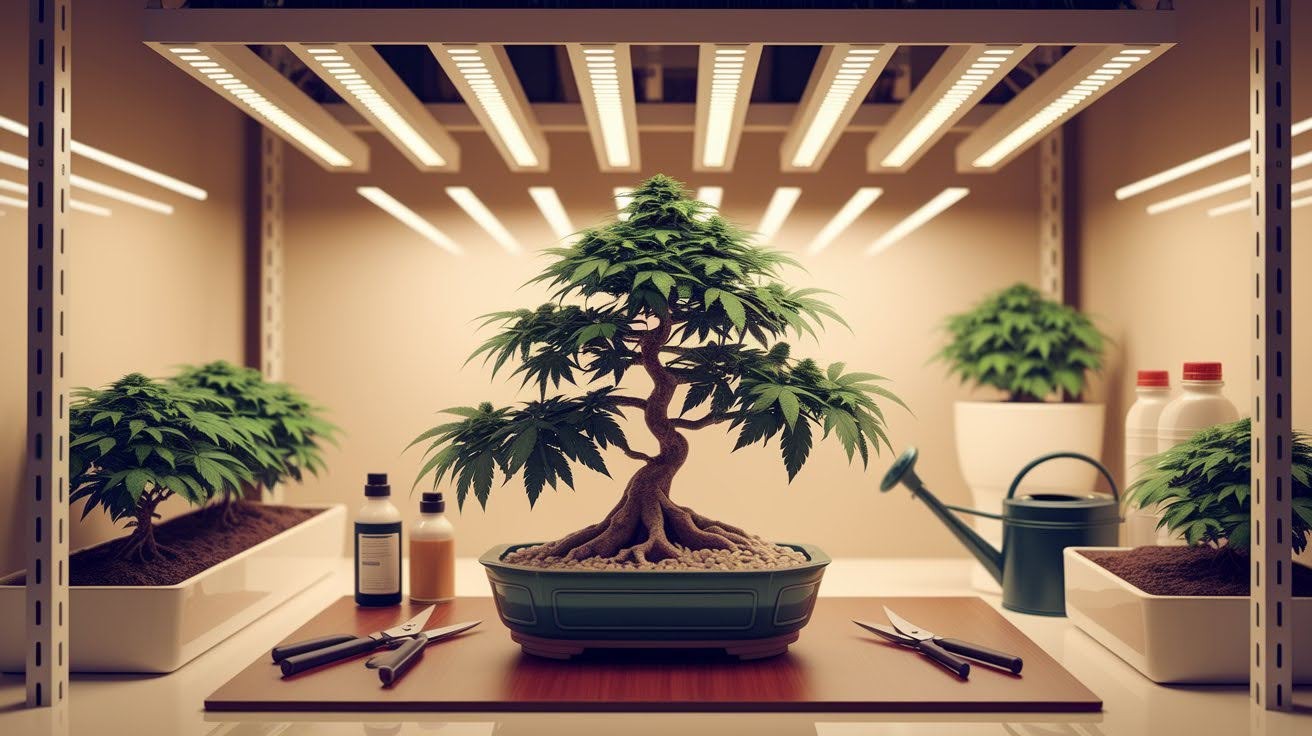
My electricity bill dropped by 60% when I switched to bonsai mother plants. I used to keep massive mother plants under 400-watt lights. Each plant needed its own 4×4 space.
The cost and space requirements were crushing my budget. Cannabis bonsai mothers changed everything.
Now I maintain six different strains in the space where one large mother used to live. Each bonsai sits under a single LED panel. The genetics stay perfectly preserved while using minimal resources.
I can take 5-10 clones monthly from each small plant. That’s 60+ clones from a 2×2-foot area. Try doing that with traditional mothers.
The monitoring becomes incredibly easy. I can inspect all six plants in under five minutes. Watering takes seconds instead of hours.
The cost savings add up quickly, too. Smaller pots mean less soil. Reduced lighting means lower electricity bills. My monthly growing costs dropped from $200 to under $50.
Management stress disappeared completely. No more wrestling with 6-foot plants during maintenance. Everything stays at eye level and arm’s reach.
Plus, you never lose genetics to accidents. If one bonsai mother dies, you still have five others producing clones.
4. Resource Conservation
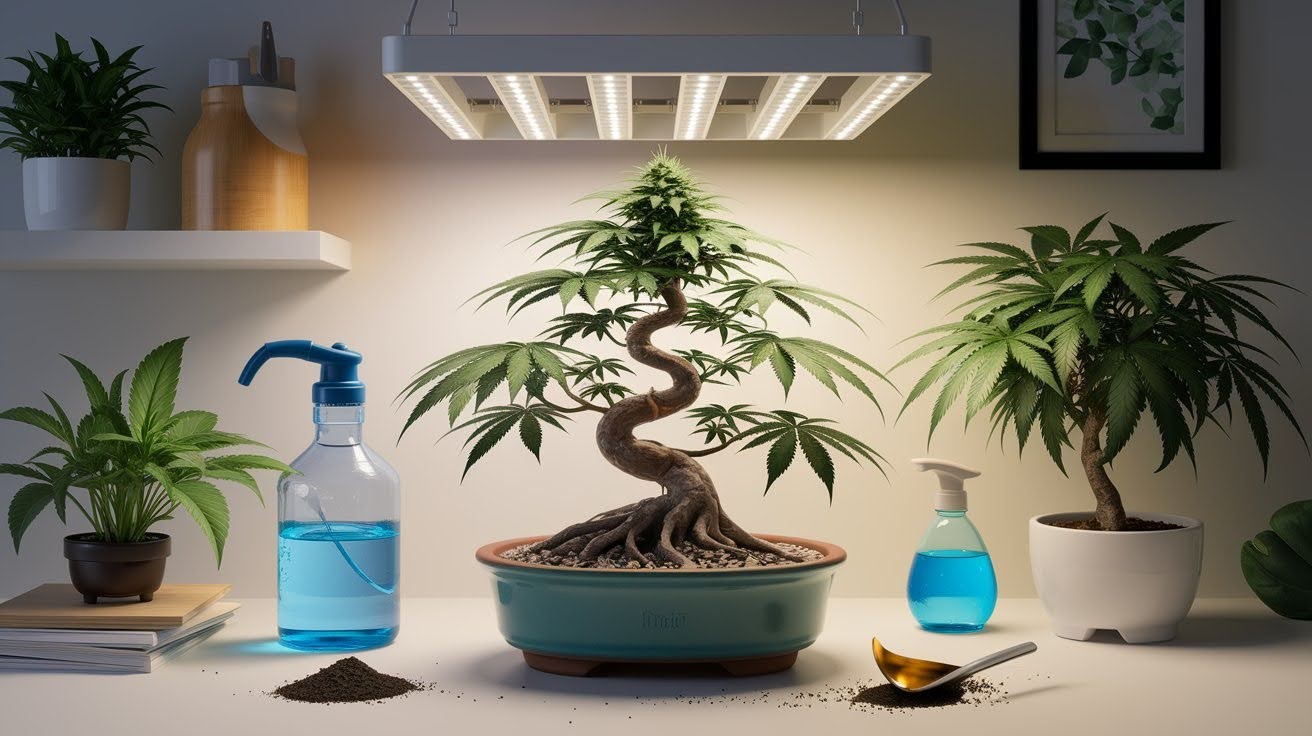
My monthly growing costs plummeted when I switched to cannabis bonsai. I used to run 600-watt lights for huge mother plants. No, a single 100-watt LED powers six bonsai mothers. The electricity savings shocked me.
Full-sized cannabis plants demand intense lighting to penetrate thick canopies. Bonsai plants need just enough light to maintain healthy growth. No more massive electric bills from industrial lighting.
Nutrient consumption becomes almost negligible. I used to mix 5-gallon batches weekly. Now I prepare one gallon that lasts over a month.
Water usage follows the same pattern. Large plants gulp gallons daily. My six bonsai mothers share less than one gallon per week.
My electricity costs dropped from $120 to $18 monthly. That’s $1,200 saved annually just on mother plant maintenance.
Watering and Nutrition Management
Cannabis bonsai require careful watering. Check soil moisture with your finger, allow drying between waterings, and water early morning to prevent root rot in small containers.
1. Watering Protocols
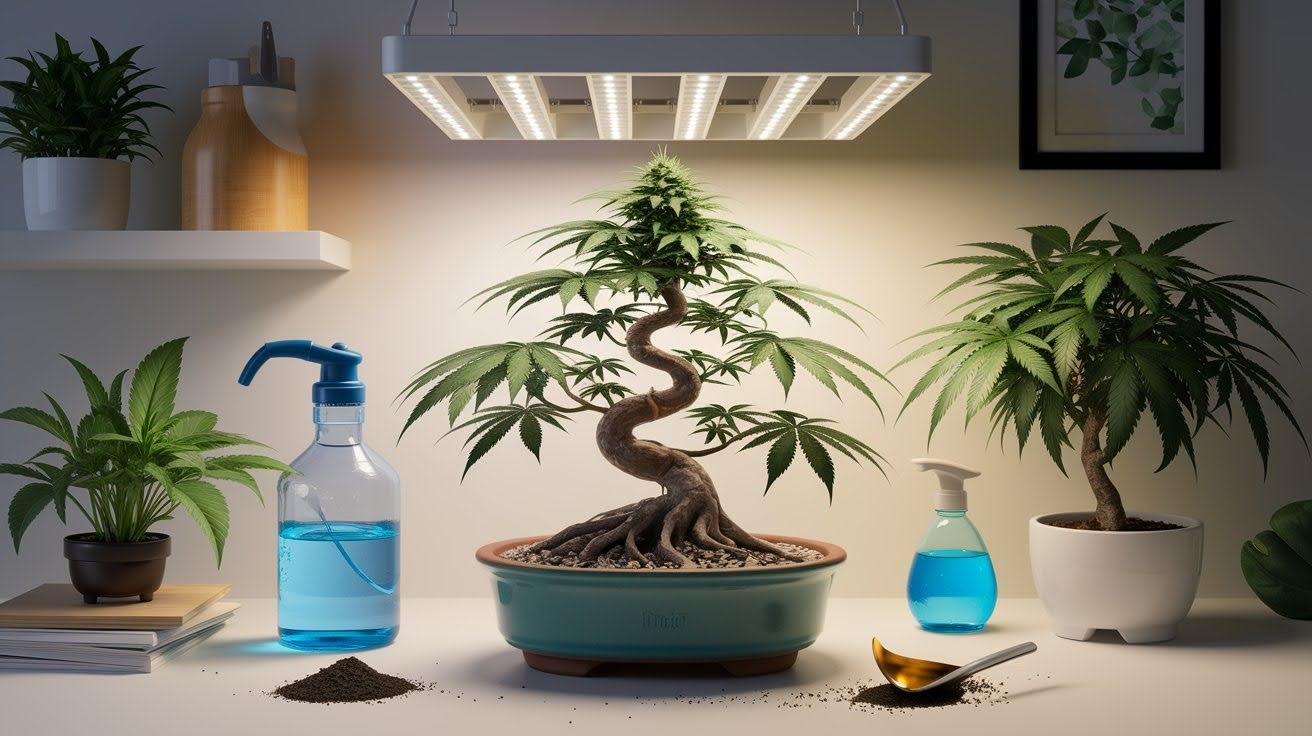
Overwatering killed my first three cannabis bonsai. I treated them like houseplants and watered them daily. Big mistake.
Small containers dry out faster than large pots. But they also get waterlogged more easily. The restricted root system can’t handle excess moisture.
I learned to check soil moisture with my finger. Stick it one inch deep into the soil. If it feels moist, wait another day.
Here’s my current watering schedule:
Summer: Every 2-3 days, depending on humidity. Winter: Every 4-5 days, when growth slows down. Always check soil moisture first.
The key is letting the soil dry slightly between waterings. Cannabis roots need oxygen just as much as water. Constantly wet soil suffocates roots and causes rot.
I use the weight test too. Lift the pot after watering to feel the weight. When it feels noticeably lighter, it’s time to water again.
Small containers mean less margin for error. Overwater a large plant, and it might recover. Overwater a bonsai and you could lose it in days.
Timing matters more than frequency. Water early morning so plants can use it during active growth hours. Evening watering can encourage fungal problems.
Watch for signs of overwatering: yellowing leaves, musty soil smell, or stunted growth despite proper lighting.
2. Water Quality and Application
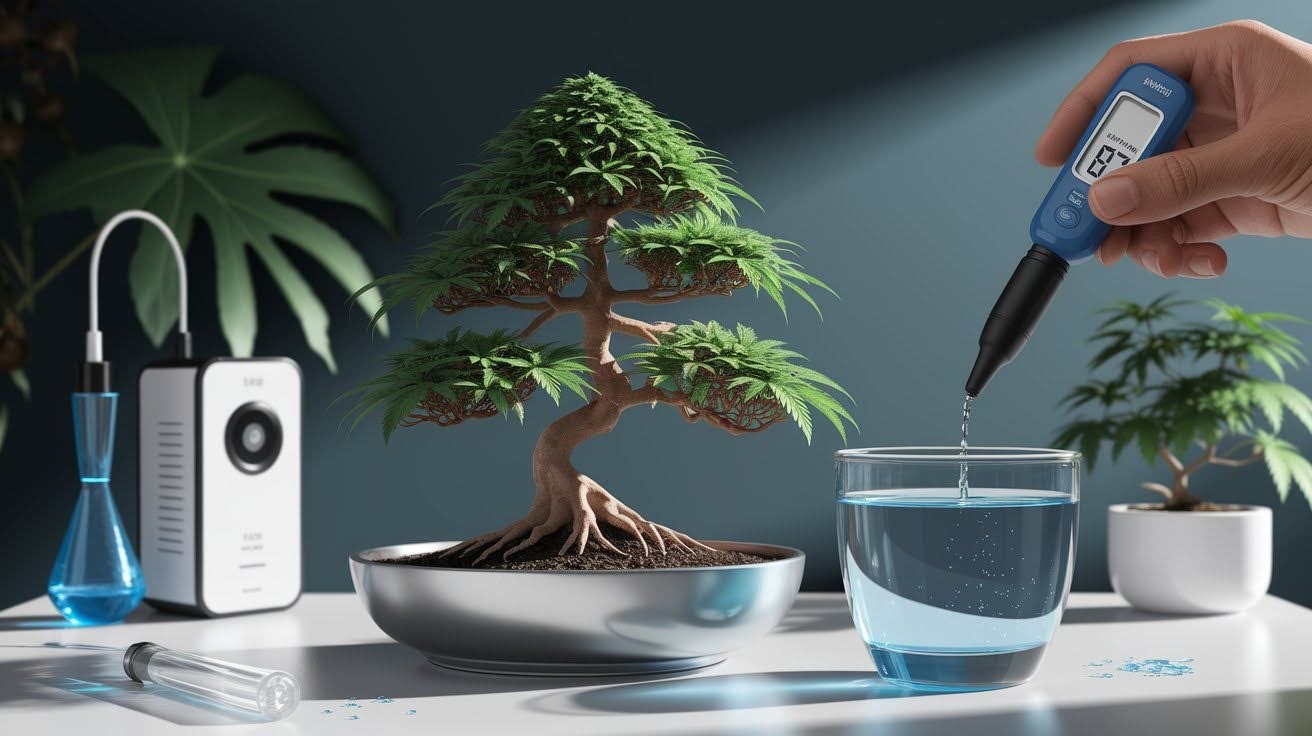
Bad water nearly killed my prize White Widow bonsai. I was using straight tap water with a pH of 8.2. The plant couldn’t absorb nutrients properly.
pH matters more in small containers than large ones. There’s less soil to buffer pH swings. I keep my water between 6.0-6.5 for optimal nutrient uptake.
Water temperature shocked me as an important factor. Cold water straight from the tap stresses roots. Room temperature water works best. I fill my watering container the night before.
Application method makes a huge difference, too. I use a small watering can with a narrow spout. This lets me water slowly and evenly around the entire soil surface.
Pour slowly until water drains from the bottom holes. This ensures the entire root system gets moisture. Stop immediately when you see drainage.
Drainage monitoring prevents root rot disasters. If water sits on top of the soil instead of soaking in, your drainage is poor. Add perlite to the soil mix.
Watch the drainage water color. Clear water means healthy soil. Brown or smelly drainage indicates root problems.
3. Nutrient Management
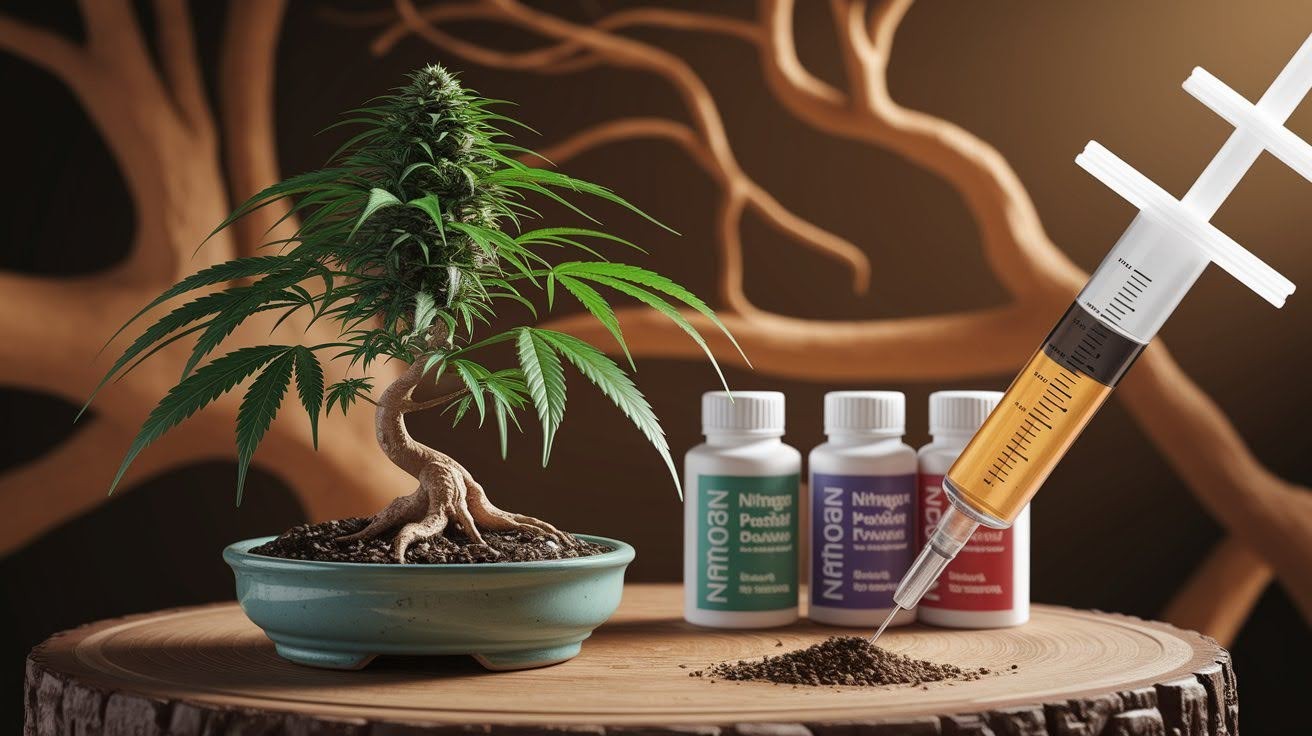
I burned my first bonsai with full-strength nutrients. Treating it like a regular plant was a costly mistake. The leaves turned yellow and crispy within days.
Cannabis bonsai need much less food than full-sized plants. I now use quarter-strength nutrients and feed less frequently. Small plants, small appetites.
Balanced fertilizers work better than cannabis-specific blends. I use standard houseplant fertilizer with equal N-P-K ratios. This prevents the explosive growth that ruins bonsai shapes.
Nitrogen control is critical.
Too much nitrogen makes cannabis stretch and grow rapidly. Your carefully shaped bonsai becomes a wild bush overnight. I learned this lesson watching my perfect little tree double in size within a week.
High nitrogen fertilizers are bonsai killers. Look for fertilizers with lower nitrogen numbers. Something like 5-5-5 instead of 20-10-10.
Micronutrients matter more in small containers. The limited soil volume gets depleted faster. I add a pinch of Epsom salt monthly for magnesium.
My current feeding schedule works perfectly:
Feed every two weeks during active growth. Use quarter-strength balanced fertilizer. Skip feeding completely during the slow winter months.
Watch for signs of overfeeding: Dark green leaves, rapid unwanted growth, or burnt leaf tips. When in doubt, feed less rather than more.
Underfeeding is easier to fix than overfeeding. Hungry plants recover quickly. Burned plants take weeks to bounce back.
4. Growth Phase Nutrition
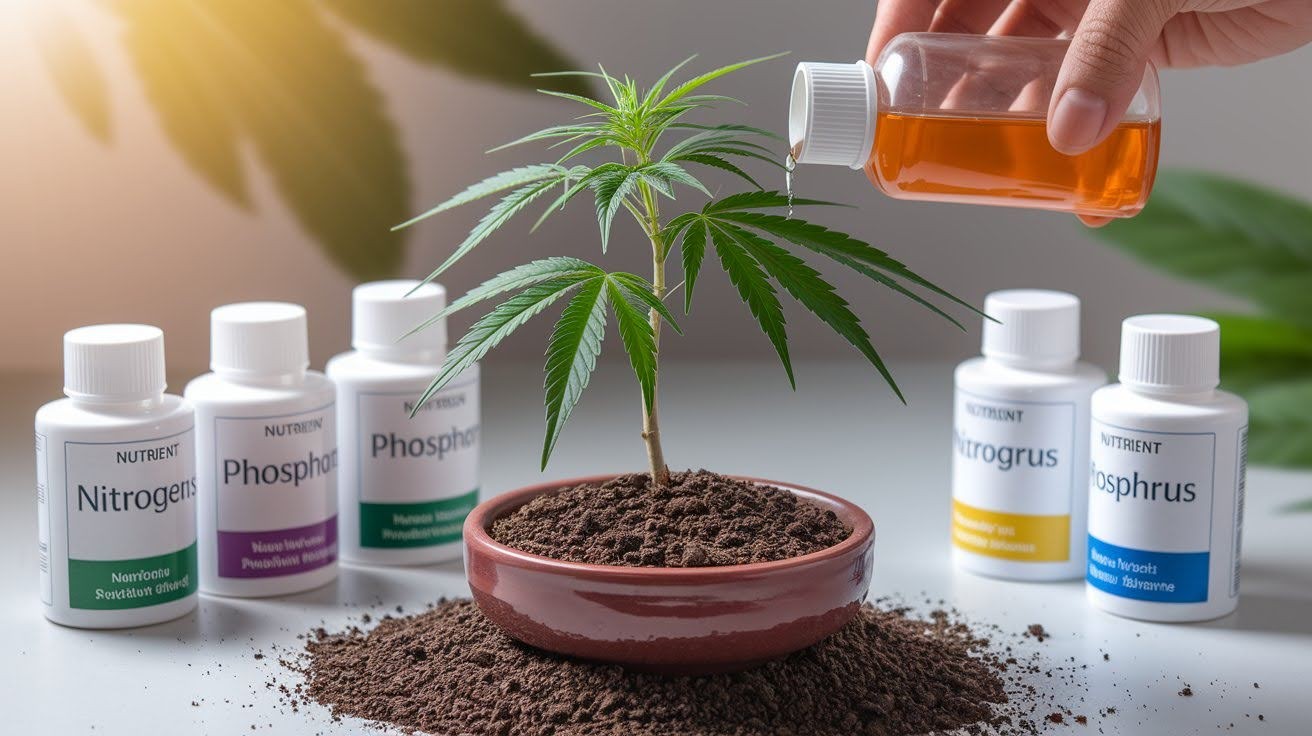
Most growers never let their bonsai flower. But I’ve experimented with both vegetative and flowering nutrition. The feeding changes dramatically between phases.
During vegetative growth, I feed every two weeks with balanced fertilizer. Quarter-strength is still my rule. The goal is slow, controlled growthnot explosive stretching.
Flowering changes everything, though.
When I let a bonsai flower, I switch to bloom nutrients with higher phosphorus. Less nitrogen prevents unwanted growth during bud development. But honestly, most bonsai stay in the vegetative phase permanently.
Deficiency identification becomes easier with small plants. You can spot problems immediately. Yellow lower leaves usually mean nitrogen deficiency. Purple stems often indicate phosphorus issues.
Here’s how I fix common problems:
Nitrogen deficiency: Light feeding with balanced fertilizer. Phosphorus deficiency: Add bloom nutrients temporarily. Magnesium deficiency: Epsom salt dissolved in water.
Overfeeding recovery takes patience.
I’ve burned several bonsai with too much fertilizer. The recovery process is simple but slow. Flush the soil with plain water. Stop all feeding for 2-3 weeks.
New growth will show if the plant is recovering. Burned leaves won’t heal, but new growth should look normal.
Prevention beats recovery every time. Start with weak nutrients and increase gradually if needed. Your bonsai will tell you what it wants through its growth patterns.
Traditional Bonsai vs Cannabis Bonsai: Key Differences
1. Plant Material and Structure Variations
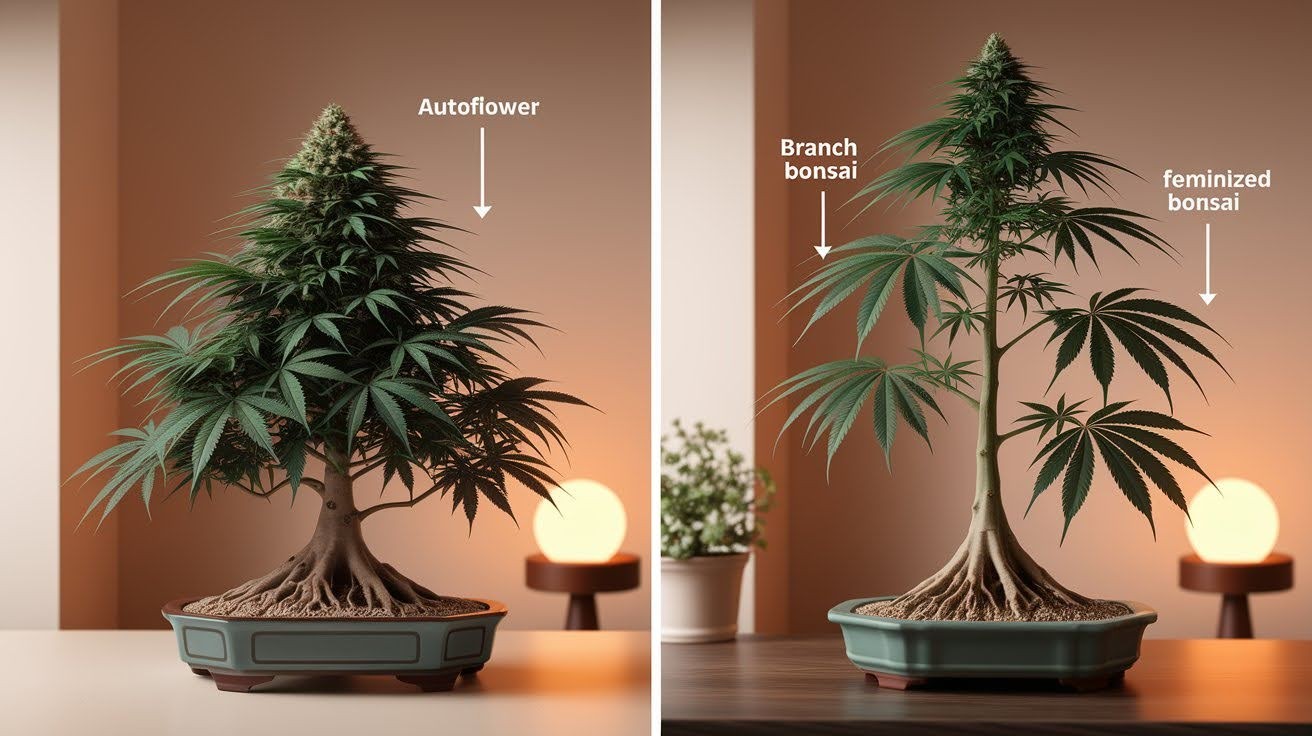
Traditional bonsai and cannabis bonsai are different animals. I learned this the hard way, trying to apply three techniques to cannabis.
Real bonsai trees develop woody trunks over decades. The bark gets thick and weathered. Cannabis plants stay soft and green forever. Even my oldest bonsai mothers have herbaceous stems with no woody aging.
Traditional bonsai artists can reduce leaf size through defoliation techniques. Cannabis leaves stay stubbornly large no matter what you do. This breaks the scale illusion that makes bonsai magical.
Tree bonsai develop strong, self-supporting trunks. Cannabis bonsai often need permanent stakes. The soft stems can’t hold elaborate shapes without help.
But here’s what cannabis bonsai offers that trees can’t: Functional beauty with practical benefits. You’re maintaining genetics and producing medicine.
2. Cultivation Timeline and Longevity
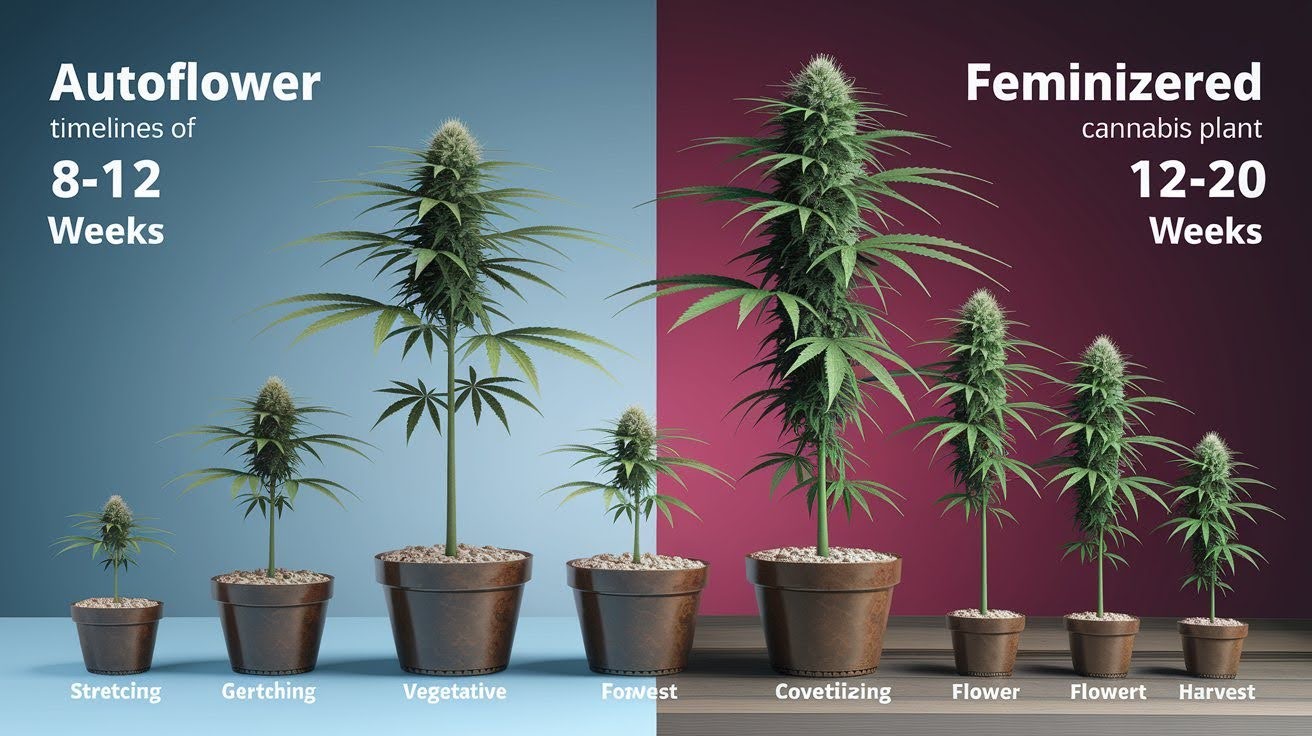
Traditional bonsai masters plan for decades. I visited a bonsai garden where the trees were 300 years old. Cannabis bonsai operates on a completely different timeline.
My fastest cannabis bonsai took shape in 3 months. Compare that to traditional bonsai, which needs 20+ years just for basic trunk development. Cannabis gives instant gratification.
Tree bonsai get passed down through generations. Grandfather starts it, grandson finishes it. Cannabis bonsai live maybe 2-3 years maximum before declining.
Traditional trees get seasonal breaks for recovery. Winter dormancy lets them rest and heal from training stress. Cannabis never stops growing.
This creates unique challenges for cannabis bonsai.
You can’t overwork traditional trees they’ll go dormant and recover. Cannabis plants under constant stress eventually burn out. No recovery periods means gentler techniques.
The development process moves lightning fast, though.
Traditional bonsai styling happens over multiple years. You make one cut and wait six months to see results. Cannabis responds to training within days.
I can reshape a cannabis bonsai weekly if needed. Traditional bonsai artists make maybe 3-4 styling decisions per year.
The refinement level differs dramatically, too. Tree bonsai have achieved incredible detail over centuries. Cannabis bonsai focuses on basic shapes and health maintenance.
But speed has advantages. Mistakes get corrected quickly instead of waiting decades. You can experiment without generational consequences.
3. Aesthetic Goals and Techniques
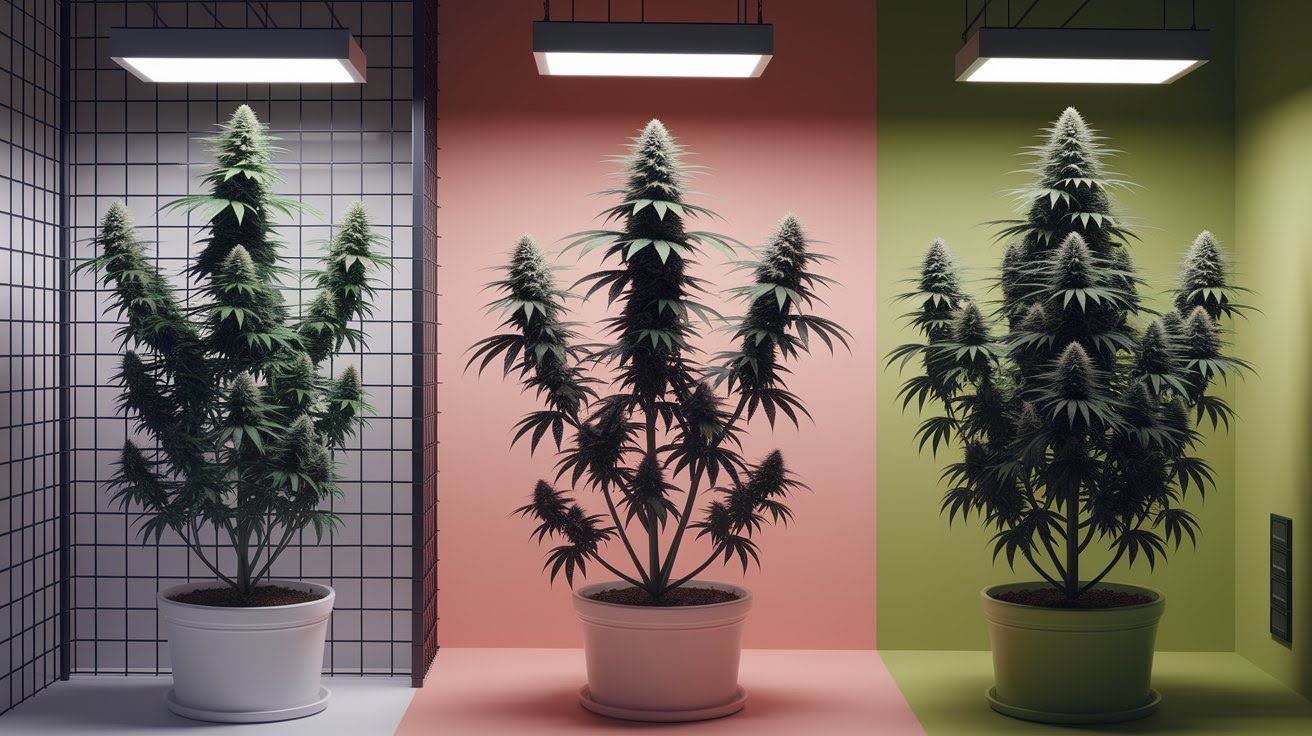
Traditional bonsai aims to capture the soul of an ancient tree. I’ve studied classical styles for years. Cannabis bonsai breaks most of these rules.
Tree bonsai masters spend decades creating the illusion of age. They want viewers to see a 500-year-old oak in miniature form. Cannabis bonsai celebrates youth and vitality instead.
Classical bonsai follows strict proportions and styling rules. Cannabis bonsai ignores these traditional measurements. Seasonal change creates magic in traditional bonsaispring flowers, autumn colors, and winter dormancy. Cannabis stays green year-round.
But cannabis bonsai has its aesthetic appeal.
Function drives the beauty. These plants look good because they’re healthy and productive. I focus on creating clean, healthy structures with vibrant green foliage and balanced branching.
Cannabis bonsai represents a living workspace. It’s art you can use. The aesthetic blends cultivation science with visual appeal.
Traditional bonsai invites contemplation of nature’s patience. Cannabis bonsai celebrates human ingenuity and practical beauty. Modern aesthetic beats ancient rules when functionality matters.
Conclusion
Cannabis bonsai offers the perfect blend of art and function for space-conscious growers. You now know how to create miniature plants that preserve genetics, produce clones, and bring zen-like beauty to any space.
Remember the key principles: choose resilient strains, use gentle training techniques, and focus on health over speed. Your first cannabis bonsai might not be perfect, but each plant teaches valuable lessons about patience and cultivation.
Start small with one plant and basic techniques. Master the fundamentals before attempting complex shapes or multiple varieties.
What’s your biggest space challenge for growing? Share your thoughts in the comments belowyour experience could help fellow growers find their perfect cannabis bonsai solution.
Happy growing, and may your miniature gardens flourish.
Frequently Asked Questions
How long does it take to create a cannabis bonsai?
Initial shaping takes 3-6 months for basic structure development. However, cannabis bonsai require ongoing maintenance and refinement. Unlike traditional tree bonsai that develop over decades, cannabis bonsai reach maturity quickly but need continuous pruning and training to maintain their miniature form.
Can cannabis bonsai produce usable buds for harvest?
Yes, but yields are significantly lower than full-sized plants. Most growers keep cannabis bonsai in vegetative state as mother plants for cloning rather than flowering them. If flowered, expect small harvests primary value is genetics preservation and aesthetic appeal.
What strains work best for cannabis bonsai cultivation?
Indica-dominant strains like Northern Lights, White Widow, and Blueberry work best due to their naturally compact growth and stress tolerance. These strains respond well to pruning, have tight node spacing, and develop dense foliage ideal for bonsai shaping techniques.
How much space do I need to grow cannabis bonsai?
Cannabis bonsai require minimal spacetypically 6-inch pots on a windowsill or small shelf. Multiple plants can fit in a 2×2-foot area under a single LED light. Perfect for apartments, closets, or any limited growing space.
Do cannabis bonsai need special care compared to regular cannabis plants?
Yes, they require more frequent but gentler care. Water less frequently due to small containers, use quarter-strength nutrients, and focus on gentle training techniques. Regular pruning every 1-2 weeks is essential to maintain miniature size and shape.



